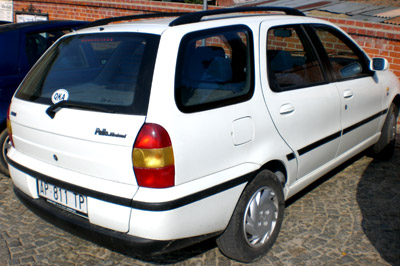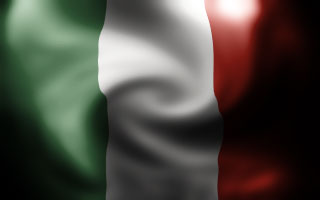Today, millions of Jewish people around the world are celebrating Rosh Hashanah, the Jewish New Year. I was wondering about the tradtions of this holiday and so did a little research…
Apparently there’s a trumpet made from a ram’s horn called shofar which is blown in traditional communities every morning of the month before Rosh Hashanah. According to wikipedia, “the sound of the shofar is intended to awaken the listener from his or her ‘slumber’ and alert them to the coming judgment”. I wonder if Frances has one of these…
Like most religious holidays, there are special services and prayers that are recited, but during Rosh Hashana,there are also special poems (called piyyuttim), which I found interesting.
There are traditional greetings for this special day: “Shana Tova” (Hebrew for ‘A Good Year’) or “Shana Tova Umetukah” (‘A Good and Sweet Year’).
During the afternoon of the first day occurs the practice of tashlikh, in which prayers are recited near natural flowing water, and one’s sins are symbolically cast into the water. Many also have the custom to throw bread or pebbles into the water, to symbolize the “casting off” of sins.
And my favorite part–food! Rosh Hashanah cuisine often includes apples and honey to symbolize a “sweet new year”. Various other foods with a symbolic meaning are served as well, depending on local custom. Some of the more popular are:tongue or other meat from the head of an animal, or fish head (to symbolise the “head” of the year), dates, black-eyed beans, leeks, spinach, gourds, and pomegranates. Often, round challah bread is served to symbolize the cycle of the year. (I love challah. I remember when I was in culinary school I saved all the parchment paper that we baked challah on and used it for wrapping paper at Christmas-hotness!) Epicurious has a mouth watering array of Rosh Hashana menus if any of you are interested in getting in on the festivities.
![]() Strawberry Tomato – the mineral salts & vitamin C in strawberries (11.6% of the final product) and the “oligoelementi” & vitamins in tomatoes (5%) combine for a really red yogurt. I noticed that they use concentrated beet juice to give the yogurt an extra rosy color!
Strawberry Tomato – the mineral salts & vitamin C in strawberries (11.6% of the final product) and the “oligoelementi” & vitamins in tomatoes (5%) combine for a really red yogurt. I noticed that they use concentrated beet juice to give the yogurt an extra rosy color!![]() Spinach Apple – Iron & soluble fiber, baby yeah!
Spinach Apple – Iron & soluble fiber, baby yeah!![]() Mango Pumpkin – Rich in vitamins A, E, potassium, calcium, phosferous & magnesium.
Mango Pumpkin – Rich in vitamins A, E, potassium, calcium, phosferous & magnesium. Pineapple Fennel – Pineapple has detoxifying properties and fennel improves digestion and can even lower cholesterol.
Pineapple Fennel – Pineapple has detoxifying properties and fennel improves digestion and can even lower cholesterol. Carrot Blueberry – Blueberries help the body’s microcirculation and improve vision, while carrots provide anti-aging elements and help repair damaged skin tissues.
Carrot Blueberry – Blueberries help the body’s microcirculation and improve vision, while carrots provide anti-aging elements and help repair damaged skin tissues.

 Looking for your good deed of the day?
Looking for your good deed of the day? 